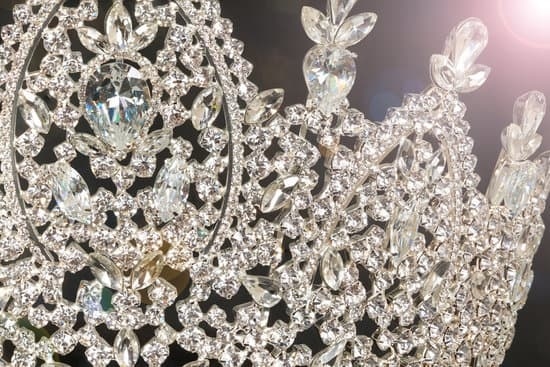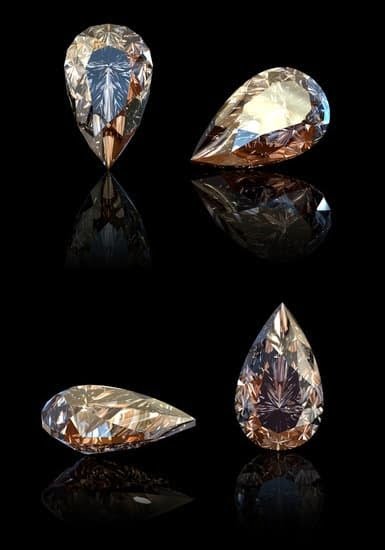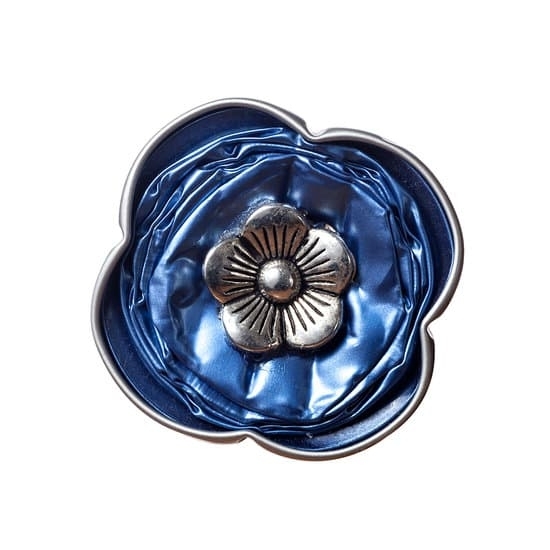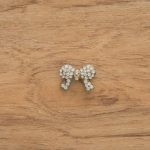India has a rich history when it comes to jewelry making, with beads and findings playing a significant role in the creation of stunning pieces. Beads and findings for jewelry making in India are not just materials – they are part of the country’s cultural heritage and tradition. From intricate designs to vibrant colors, Indian jewelry is known for its beauty and craftsmanship.
The art of bead and jewelry making in India dates back centuries, with techniques passed down through generations. Beads have always been an integral part of Indian culture, used not only for ornamental purposes but also for spiritual significance. Findings such as clasps, jump rings, and ear wires are essential components that help bring these beautiful creations together.
India offers a wide variety of beads ranging from semi-precious stones to glass beads, each adding its unique touch to the jewelry piece. The country is also known for its intricate metal findings that complement the beads perfectly. Whether you’re looking to create traditional Indian jewelry or modern designs inspired by the culture, India has everything you need to embark on your jewelry-making journey.
History of Bead and Jewelry Making in India
India has a rich history when it comes to bead and jewelry making, with traditions dating back centuries. The art of jewelry making in India is deeply rooted in the country’s culture, religion, and history. Various empires that have ruled over India, such as the Mughals and the Rajputs, have greatly influenced the styles and techniques used in jewelry making. Beads and findings play a crucial role in Indian jewelry, adding intricate details and enhancing the overall aesthetic appeal.
To understand the history of bead and jewelry making in India is to delve into a world of exquisite craftsmanship and artistic expression. From ancient civilizations like the Indus Valley civilization to the intricate designs of the Mughal era, each period in Indian history has contributed to the evolution of jewelry making. Beads have been an essential component of Indian jewelry for centuries, with materials ranging from precious gemstones like diamonds and rubies to more accessible materials like glass beads.
The craftsmanship involved in bead and jewelry making in India has been passed down through generations, with specialized skills being honed over time. Techniques such as meenakari (enameling), kundan setting (gemstone setting), filigree work, and jadau (polki) work are highly regarded in traditional Indian jewelry making.
These methods require precision, patience, and a deep understanding of materials to create stunning pieces that reflect the country’s rich cultural heritage. Whether it’s intricate beaded necklaces or elaborate earrings adorned with findings, Indian jewelry showcases a blend of tradition and innovation that continues to captivate enthusiasts worldwide.
- Antique gold beads
- Kundan beads
- Lac beads
Types of Beads Used in Indian Jewelry Making
India is a land rich in tradition and culture, and this is reflected in the types of beads used in jewelry making. One of the most popular types of beads used in Indian jewelry making is the Kundan bead. Known for its intricate designs and vibrant colors, Kundan beads are typically made by setting precious or semi-precious stones into a gold or silver base. These beads add a touch of elegance and sophistication to any piece of jewelry.
Another type of bead commonly found in Indian jewelry making is the Meenakari bead. Meenakari beads are known for their colorful enamel work, which gives them a unique and eye-catching appearance. These beads are often used in traditional Indian jewelry pieces like necklaces, earrings, and bangles. The art of Meenakari bead making has been passed down through generations, making each bead a work of art in itself.
In addition to Kundan and Meenakari beads, Indian jewelry makers also use a variety of other materials such as glass beads, metal beads, wood beads, and even clay beads. Each type of bead adds its own distinctive touch to the finished piece, creating a diverse range of styles and designs.
Whether you prefer intricate detailing or simple elegance, there is a bead out there to suit every taste and aesthetic when it comes to creating stunning Indian jewelry pieces using authentic beads and findings from India.
Popular Findings for Jewelry Making in India
India is known for its rich tradition of jewelry making, with a wide variety of beads and findings available for creating stunning pieces. When it comes to popular findings for jewelry making in India, there are several options that are commonly used by artisans and designers. These findings not only enhance the beauty of the jewelry but also add a touch of authenticity and cultural significance to the pieces.
One popular type of finding used in Indian jewelry making is the traditional jhumka. These intricate bell-shaped components are often found in earrings, necklaces, and bangles, adding a touch of elegance and charm to the overall design. Another common finding in Indian jewelry making is the kundan setting, which involves setting precious or semi-precious stones in a gold or silver base to create dazzling pieces that are sure to catch the eye.
In addition to jhumkas and kundan settings, Indian jewelry makers also frequently use filigree work in their designs. Filigree involves intricate metalwork where thin wires are twisted and soldered together to create delicate patterns and designs. This technique adds a sense of intricacy and sophistication to the jewelry, making it highly sought after by collectors and connoisseurs alike.
Traditional Indian Jewelry Making Techniques
India boasts a rich history of traditional jewelry making techniques that have been passed down through generations. One of the most prominent techniques used in Indian jewelry making is known as Kundan, which involves setting precious gemstones within a gold foil base.
This intricate process requires skilled artisans to create stunning pieces of jewelry that are highly valued for their craftsmanship and beauty. Another popular technique is Meenakari, where colorful enamel work is used to enhance the design of the jewelry.
In addition to these traditional techniques, Indian jewelry makers also utilize techniques such as Thewa, where intricate designs are handcrafted on glass by fusing it with gold or silver. This results in exquisite pieces that showcase the artistry and skill of the craftsmen. Additionally, Jadau is a technique where uncut diamonds or colored gemstones are set using pure gold to create elaborate and ornate jewelry pieces that are often worn at special occasions such as weddings.
These traditional Indian jewelry making techniques highlight the meticulous craftsmanship and attention to detail that goes into creating each piece. By incorporating these techniques into their designs, artisans are able to preserve cultural heritage while also showcasing their creativity and skill. With such diverse techniques at their disposal, Indian jewelry makers continue to produce stunning pieces using authentic beads and findings for jewelry making India, making them highly sought after both locally and internationally.
Where to Source Authentic Beads and Findings in India
India is a land of rich cultural heritage and exquisite craftsmanship when it comes to jewelry making. For those looking to source authentic beads and findings for jewelry making in India, there are several options to explore. One of the best ways to find high-quality materials is by visiting local markets and artisanal shops in cities like Jaipur, Mumbai, and Varanasi, where traditional jewelry-making techniques have been passed down through generations.
Additionally, there are online platforms that specialize in providing a wide range of beads and findings for jewelry making in India. These platforms offer a convenient way to access a diverse selection of materials from different regions of the country. Whether you are looking for intricately designed metal findings or colorful glass beads, these online stores often have a curated collection that caters to both traditional and contemporary tastes in jewelry making.
When sourcing beads and findings for jewelry making in India, it is essential to consider the authenticity and quality of the materials. Many artisans and small-scale suppliers take pride in offering handcrafted beads made from semi-precious stones, metals, wood, or even recycled materials. By supporting these local artisans, not only do you get unique pieces for your designs but also contribute to preserving age-old traditions of craftsmanship in India.
| Online Platforms | Physical Locations |
|---|---|
| ArtisanMarket.in | Jaipur Gem Palace (Jaipur) |
| Craftsvilla.com | Colaba Causeway Market (Mumbai) |
| IndianCrafts.com | Dashashwamedh Ghat Bazaar (Varanasi) |
Tips for Beginners in Jewelry Making in India
Invest in Quality Tools and Materials
When starting out in jewelry making, it is essential to invest in good quality tools and materials. From pliers to wire cutters, having the right tools can make a significant difference in the outcome of your jewelry pieces. Similarly, using authentic beads and findings for jewelry making in India can enhance the overall look and feel of your creations. High-quality materials will not only result in beautiful jewelry but will also ensure durability.
Practice Patience and Persistence
Jewelry making is a craft that requires practice, patience, and persistence. It may take time to master techniques such as bead weaving or wire wrapping, so it’s important to keep practicing and not get discouraged by initial challenges. By dedicating time to honing your skills and experimenting with different designs, you will gradually improve your craftsmanship.
Seek Inspiration From Indian Jewelry Traditions
India has a rich history of jewelry making that dates back centuries. To gain inspiration for your own creations, explore traditional Indian jewelry designs and techniques. Take note of the intricate patterns, vibrant colors, and symbolic meanings behind certain beads and findings used in Indian jewelry making. By incorporating elements of traditional Indian design into your pieces, you can create unique and culturally rich jewelry that pays homage to India’s heritage.
Cultural Significance of Beads and Findings in Indian Jewelry Making
India has a rich cultural heritage that is reflected in its jewelry making traditions. Beads and findings play a significant role in Indian jewelry, not just as embellishments, but also with deep cultural significance. The use of beads in jewelry making dates back centuries and each bead carries its own symbolism and meaning.
Symbolism of Beads
In Indian culture, different types of beads are believed to possess various attributes. For instance, Rudraksha beads are considered sacred in Hinduism and are believed to have healing properties. On the other hand, glass beads are often used in traditional Indian jewelry to ward off evil spirits and bring good luck. Each bead used in Indian jewelry tells a story and holds a special significance.
Significance of Findings
Findings such as clasps, jump rings, ear wires, and crimps may seem like small components of jewelry making, but they are essential for holding the piece together. In Indian jewelry making, findings are often intricately designed to complement the overall aesthetics of the piece. These findings can be simple or elaborate, depending on the style of jewelry being created. The craftsmanship that goes into creating these findings is often passed down through generations, adding to their cultural significance.
Importance in Rituals and Festivals
In India, beads and findings are not just decorative elements in jewelry but also play a vital role in rituals and festivals. Traditional ceremonies like weddings or religious festivals often include elaborate beadwork and jewelry making as part of the celebrations.
Beads and findings are seen as auspicious elements that bring blessings and protect the wearer from harm. The intricate designs and craftsmanship involved in creating Indian jewelry with beads and findings make them treasured pieces that hold both aesthetic beauty and cultural importance.
Inspirational Examples of Indian Jewelry Designs Using Beads and Findings
India has a rich tradition of jewelry making that dates back centuries, with beads and findings playing a central role in the creation of intricate and beautiful designs. From colorful glass beads to shimmering metal findings, Indian jewelry is known for its exquisite craftsmanship and attention to detail.
One of the most popular types of beads used in Indian jewelry making is the vibrant and versatile seed bead. These tiny beads are often painstakingly hand-stitched onto fabric or woven into intricate patterns to create stunning pieces of jewelry. Additionally, semi-precious stones like turquoise, coral, and jade are also commonly used in Indian jewelry for their natural beauty and spiritual significance.
In terms of findings, components like clasps, jump rings, and earring hooks are essential for completing a piece of jewelry. Indian artisans often craft these findings from silver or gold to ensure durability and a luxurious finish. These findings not only serve a functional purpose but also add an elegant touch to the overall design of the jewelry piece.
| Types of Beads | Popular Findings |
|---|---|
| Seed Beads | Silver Clasps |
| Semi-Precious Stones | Gold Jump Rings |
Conclusion
India has a rich history when it comes to jewelry making, with beads and findings playing a crucial role in creating exquisite pieces that have stood the test of time. From intricate beadwork to elaborate metal findings, Indian jewelry reflects the country’s diverse culture and artistic traditions. The importance of beads and findings in Indian jewelry making cannot be understated, as they are not just materials but symbols of heritage and craftsmanship.
When it comes to sourcing authentic beads and findings for jewelry making in India, artisans and enthusiasts have a plethora of options to choose from. Whether shopping at local markets, specialized stores, or online platforms, one can find a wide range of high-quality materials that showcase the beauty and diversity of Indian jewelry making.
It is essential for beginners in this craft to explore different sources and experiment with various types of beads and findings to truly understand the artistry behind Indian jewelry making.
In conclusion, the timeless beauty of Indian jewelry making with beads and findings continues to captivate people around the world. The intricate designs, vibrant colors, and cultural significance embedded in each piece reflect centuries-old traditions that have been passed down through generations. As we appreciate the artistry behind Indian jewelry making, let us also celebrate the craftsmanship, creativity, and passion that go into creating these stunning works of art using beads and findings.
Frequently Asked Questions
Which Beads Are Best for Jewelry-Making?
The best beads for jewelry-making depend on the style and design of the piece. High-quality beads like Swarovski crystals, freshwater pearls, and gemstones are popular choices due to their durability and elegant appearance.
What Are the Findings Used in Jewellery Making?
Findings are essential components used in jewelry making to connect different parts of a piece together. Some common findings include clasps, jump rings, ear wires, and headpins. These findings not only provide functionality but also add aesthetic value to the jewelry.
Where Are Glass Beads Made in India?
Glass beads in India are commonly made in regions like Firozabad in Uttar Pradesh and Varanasi. Skilled artisans use traditional techniques to create intricate designs on glass beads, reflecting the rich cultural heritage of India’s craftsmanship.

Welcome to my jewelry blog! My name is Sarah and I am the owner of this blog.
I love making jewelry and sharing my creations with others.
So whether you’re someone who loves wearing jewelry yourself or simply enjoys learning about it, be sure to check out my blog for insightful posts on everything related to this exciting topic!





